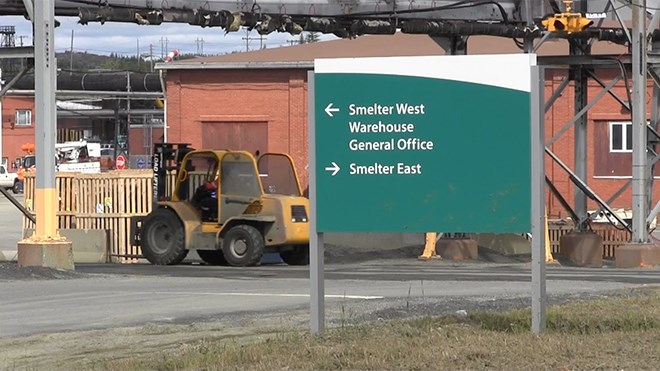Kate Jordan, a spokesperson with the Ontario Ministry of the Environment, said the monitoring station is in downtown Sudbury, and don't reflect concentrations nearer the acid plant in Copper Cliff. Their data shows levels peaked at 6:37 a.m. at around 25 ppb.
"At the time of the incident, access to the site was restricted and the roads were closed, so we'll look to the company in terms of what air monitoring they did and what they were detecting at the site and off the site," Jordan said. "We do have environmental officers responding to the situation. So we will be meeting with the company to request information on the incident, including the cause of it and also steps they will be taking to prevent something like this from occurring again."
She said a nitrogen dioxide levels above 200 ppb is considered the limit before it becomes a hazard.
"That's the level we look to to protect communities and the environment."
As of late Wednesday morning, Jordan said officers from MOE were on site investigating the incident. They'll be asking the company for detailed information before deciding whether charges should be laid.
“After that review, we will decide on any needed or appropriate actions or next steps,” she said. "At this point, a decision on an investigation or possible charges has not yet been made, but certainly that is a possibility and it's something that we will review."
When asked whether the air quality readings indicate the problem started last night, Jordan said that will be one of the questions they'll be looking to answer as their investigation proceeds.
"The information we have from the company is they reported the release this morning around 7:30,” she said. “But we will be following up with them in terms of timing of the leak, the duration, the amount. That's information we are looking to get from the company at this time.
"So we'll review that, and based on that review, we'll determine appropriate next steps. That could include further investigation and possible charges and prosecution. But at this point, our focus is really on getting more information about what happened this morning from the company."
Air quality monitoring data for Sudbury can be accessed here.
Facts about Nitrogen Dioxide
What is Nitrogen Dioxide?
NO2 is a reddish-brown gas with a pungent and irritating odour. It transforms in the air to form gaseous nitric acid and toxic organic nitrates. NO2 also plays a major role in atmospheric reactions that produce ground-level ozone, a major component of smog.
What are the sources of NO2?
All combustion in air produces oxides of nitrogen (NOx), of which NO2 is a major product. Approximately two-thirds or 69 per cent in 2012 came from the transportation sectors, while mining and smelters accounted for three per cent of the total.
What are the effects of NO2?
NO2 can irritate the lungs and lower resistance to respiratory infection. Sensitivity increases for people with asthma and bronchitis. NO2 chemically transforms into nitric acid and, when deposited, contributes to lake acidification.
What are the limits of NO2 allowed in the air? The Ontario Ambient Air Quality Criteria for one-hour average is 200 parts per billion.
-- Source: Ontario Ministry of the Environment and Climate Change
